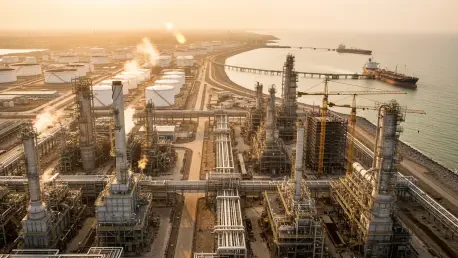Nigeria is weighing a bold bet that could reset its energy economy, as Dangote teams with Honeywell in a push to lift refining capacity from 650,000 barrels per day to 1.4 million by 2028 while expanding petrochemicals output to industrial scale and tightening the loop between fuels, plastics, and foreign exchange stability.
A High-Stakes Question With Outsized Consequences
If the complex reaches 1.4 million bpd and runs reliably, domestic diesel and jet fuel could shift from scarcity pricing to steady supply. That change would lower logistics costs, support industrial uptime, and relieve pressure on pump prices, though taxes, transport, and retail rules would still shape outcomes at the nozzle. The forex impact is equally significant: replacing imports and exporting surplus products would reduce dollar demand and improve naira liquidity.
The pivot is broader than fuels. Honeywell’s technology package steers the plant deeper into petrochemicals, with Oleflex slated to lift polypropylene to about 2.4 million metric tons per year. That integration diversifies cash flows and anchors value chains for packaging, textiles, and auto components, echoing a global trend where mega-refineries hedge refining cracks with polymer spreads.
Why This Move Matters Now
Decades of underperforming state refineries and subsidy distortions left Nigeria exposed to import cycles. Dangote’s private start-up emerged as a market solution, mobilizing scale and logistics discipline where public assets stalled. The expansion escalates that wager, aiming to process most domestic crude while building an export-ready slate.
Globally, integrated complexes dominate new capacity. Plants that align fuels with chemicals withstand margin swings better than pure-play refineries. For Nigeria, this model carries national stakes: sustained high utilization could free forex, stabilize supply chains, and reorient trade flows across West Africa.
The Expansion, Decoded: What Doubling Capacity Really Entails
The plan adds a second single-train unit over roughly three years from now, preserving the “largest single-train” distinction while rivaling global hubs. The headline number matters, but performance hinges on maintaining 90%+ throughput, minimizing energy intensity, and trimming unplanned downtime. Reliability, not nameplate, determines netbacks.
Technology is the hinge. Honeywell’s catalysts are designed to widen the crude slate to heavier and sour grades, boosting flexibility and bargaining power. Process solutions target lower energy use and tighter operations, while Oleflex supports the polypropylene lift. Case studies such as Reliance Jamnagar show how balancing fuels and chemicals steadies earnings across cycles—useful precedent, not a guarantee.
Supply security amplifies the macro effects. Diesel and jet parity could arrive first, followed by gasoline as logistics mature. Exportable grades would bolster forex, yet port congestion, storage turnover, and coastal distribution remain gating factors. Regionally, West African supply and bunker markets could rebalance as Nigerian cargoes reshape trade routes.
Voices And Evidence That Sharpen The Outlook
Analysts point to three levers that make or break the plan: assured crude contracts with secure pipelines, energy efficiency tracked through a disciplined EII, and turnaround timing that defends on-stream factors. Independent downstream watchers also flag price transmission risks if retail controls or tax frictions blunt market signals.
Data trends reinforce the strategy. A rising share of global capacity additions are integrated sites, and utilization consistently outweighs scale in determining cash generation. Research on polymer integration shows earnings volatility moderates when polymers rise as cracks fall, and vice versa—an effect the polypropylene ramp is built to capture.
On the ground, fuel marketers seek long-term supply contracts that smooth volumes and pricing formulas, while manufacturers plan for local PP grades and certification pathways. Logistics operators warn that port and storage throughput must scale in tandem with production, or else bottlenecks will leak value that technology gains worked to secure.
Playbooks For Stakeholders: Turning Scale Into Lasting Gains
Policy support can lock in momentum: prioritize domestic crude allocations alongside production recovery, align product standards with export markets, and streamline customs to accelerate loadout. Transparent pricing frameworks and predictable FX access for inputs would help transmit efficiency to end-users.
Operators can deepen crude-slate flexibility with broader assay libraries and blend optimization, while predictive maintenance and catalyst management safeguard uptime. Tracking EII, on-stream rates, yield shifts, and flare levels provides early warnings before margins erode. Investors, in turn, can map milestones—EPC awards, mechanical completion, cold and hot commissioning, commercial operations—while stress-testing for feedstock shocks, power interruptions, and demand swings.
For manufacturers, early offtake for PP with grade flexibility, robust quality control, and recyclability pathways can seed new capacity in packaging and automotive parts. With execution discipline, infrastructure upgrades, and market transparency, the path to 1.4 million bpd and scaled polymers remained challenging yet attainable, and the gains to prices, forex, and industry depth had become too consequential to ignore.









